From yahoo.com
This article originally appeared on Yoga Journal
If you’ve ever experienced sciatica, you know that the nagging, burning feeling along the back of your legs affects everything you do-the way you walk, how well you sleep, whether you can pick up your child or sit through the length of a road trip. The pain can be unbearable.
When all you want to do is get rid of the pain, you can practice yoga for sciatica relief. Sciatica stretches can provide a temporary reprieve from your symptoms as well as help ease discomfort over the long term. And not only can your yoga practice help relieve your symptoms, it can also improve your mental outlook when you’re faced with sciatic pain.
What Exactly is Sciatica?
Sciatica itself isn’t a medical condition. It's the symptom of a medical condition that pinches or otherwise damages the sciatic nerve, which starts at the base of your spine and extends down through the pelvis and along the backs of both thighs.
The nerve can be compromised by a bulging or herniated disk in the spine, an overgrowth of bone or bone spurs, or any trauma to the lumbar spine. A tumour can exert pressure on the nerve; diabetes can also cause nerve damage. Piriformis syndrome, a condition in which a small muscle under your glutes compresses and inflames the sciatic nerve, can also cause pain, but usually in a specific area, not along the length of your leg.
Sciatica is quite common. As many as 40 percent of people experience it throughout their lifetime. Your age and occupation are some of the highest risk factors for sciatica. It’s most common in people between the ages of 30 and 50. As you age you may be more susceptible to the condition. You may be more at risk if you do a lot of twisting or heavy lifting, or if you're sitting all day. Being overweight also increases your chances of experiencing sciatica.
How Do You Know If You Have Sciatica?
Sciatic pain can present in a variety of ways, but often it’s described as a constant burning sensation. It can also feel sharp or throbbing or tingling. Your legs may feel weak or numb.
It could be worse when you’re sitting, bending forward, twisting, or trying to stand up. Though the sciatic nerve runs along both legs, a key symptom of sciatica is pain that is typically experienced on only one side of the body.
To determine the cause of your sciatic pain, your healthcare provider will give you the FAIR test for flexion, adduction, and internal rotation. In this test, a physical therapist or other qualified medical professional will ask you to lie on your side, with the affected hip on top. The therapist will move your leg in various positions--flexing it, moving it back, lifting it away from the midline, and rotating it inward.
This helps them examine the hip’s stability and see what might be compressing the sciatic nerve. If you feel pain in the gluteal area or radiating down your leg during this movement, you may have sciatica. The FAIR test can also help differentiate between sciatica and piriformis syndrome.
5 Sciatica Stretches
These sciatica stretches can help soothe sciatic nerve pain and release tension in your lower back and hips, so you can be on your way to healing. Add these poses to your yoga practice or other exercise routine. When you are practicing yoga for sciatica, pay attention to how you're sitting and maintain good posture.
For detailed descriptions of each pose, plus variations, cues, and benefits, click the links below to visit the Yoga Journal Pose Library
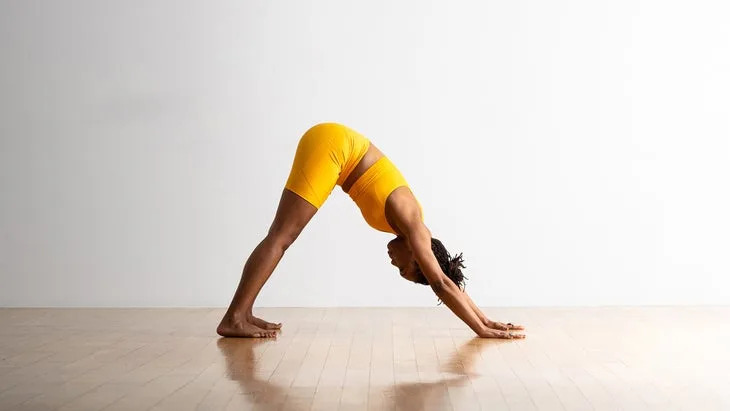
Adho Mukha Svanasana (Downward-Facing Dog Pose)
Down Dog stretches your low back and glutes, and takes pressure off your lumbar spine.
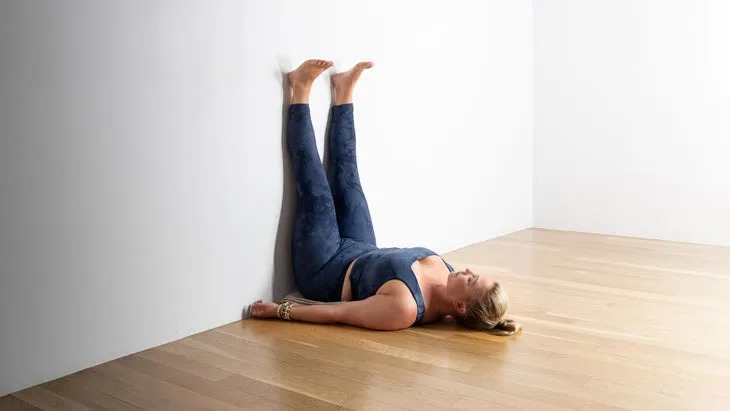
Viparita Karina (Legs-up-the-Wall Pose)
Legs-up-the-Wall is a restorative yoga posture that stretches your hamstrings and glutes, relaxes your hips, and releases tension in your low back. Sciatica pain that travels from the low back through the glutes and down the hamstrings can often be relieved in this inversion.
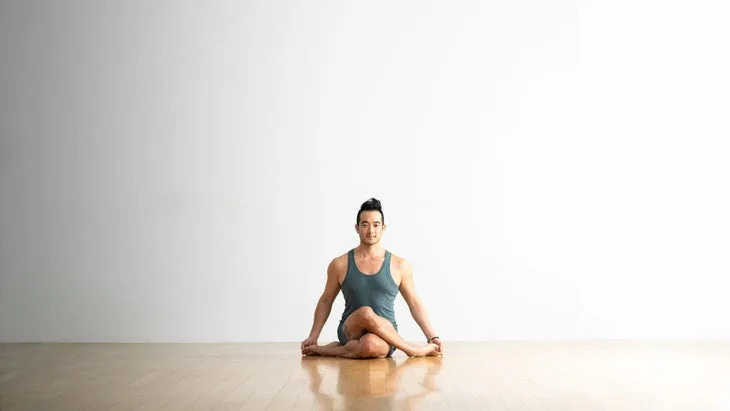
Gomukhasana (Cow Face Pose), variation
This variation of Cow Face Pose offers a strong stretch for the hips as well the piriformis, easing compression on the sciatic nerve.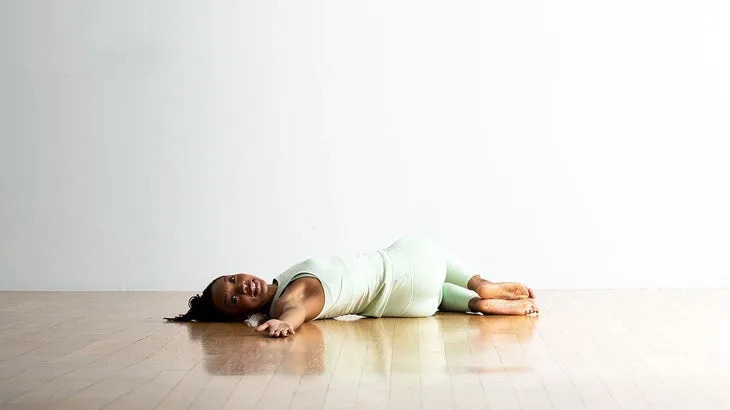
Supta Matsyendrasana (Supine Spinal Twist)
This spinal twist internally rotates the thighs while allowing gravity to pull your knees down, providing a passive stretch for your hips.
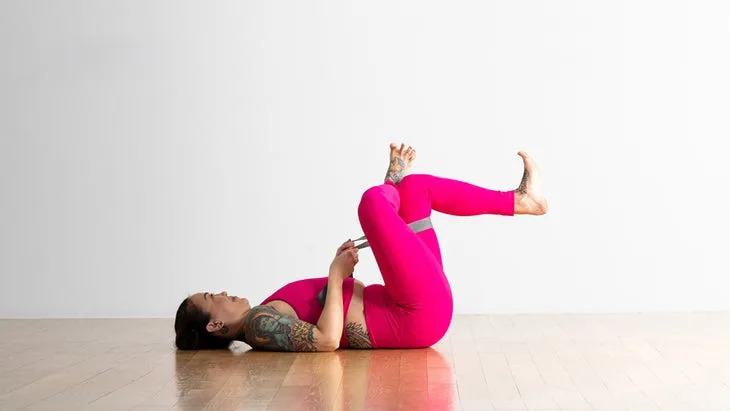
Reclining Pigeon Pose
Sometimes called Supta Kapotasana, this posture stretches the hips while releasing pressure in the low back. By lying down instead of doing a traditional Pigeon Pose, you experience less weight on the hips and the low back isn’t as compressed.
https://www.yahoo.com/lifestyle/5-sciatica-stretches-relieve-nagging-111839355.html
No comments:
Post a Comment